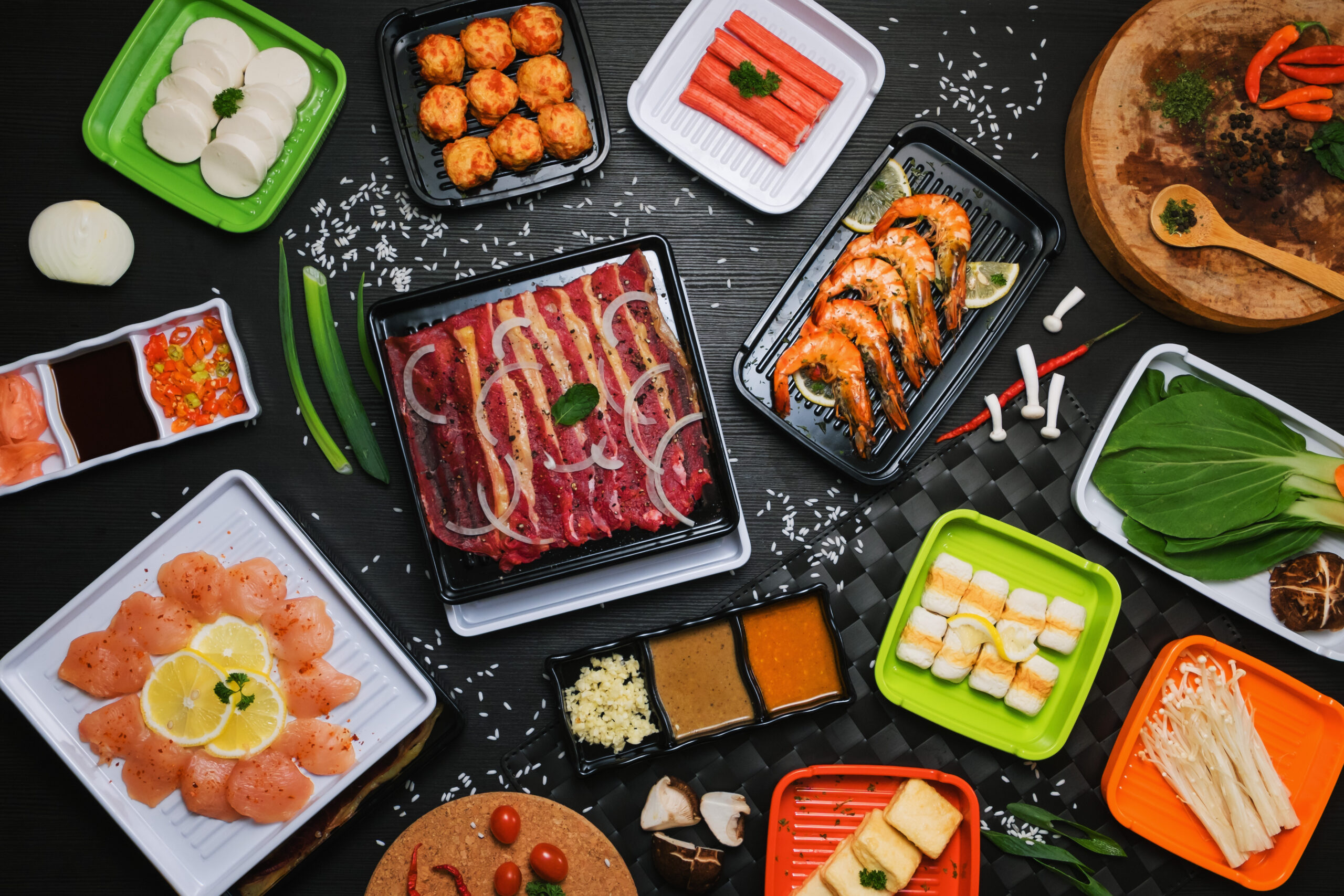When customers step into a Japanese or Korean restaurant, they expect more than just delicious food. The overall dining experience—from the atmosphere, the aroma, to the table setting—plays a crucial role in shaping their impression. One of the most overlooked yet powerful elements in restaurant branding is tableware. Plates, bowls, chopsticks, and cups are not just functional; they represent the culture, quality, and professionalism of your business.
For restaurant owners, the challenge is choosing safe and aesthetic tableware that enhances both presentation and practicality. In this guide, we’ll walk through the key factors to consider when selecting the best tableware for Japanese and Korean dining concepts.
1. Prioritize Safety with Food Grade Materials
The first and most important aspect of tableware selection is safety. Not all dinnerware materials are suitable for professional use, especially when exposed to hot dishes, sauces, or frequent washing.
- Melamine (Food Grade) – One of the most popular options for Asian restaurants. It’s lightweight, durable, resistant to breakage, and certified as food safe when sourced from trusted suppliers.
- Ceramic & Porcelain – Traditional and elegant, often used for upscale restaurants. They are heavier and more fragile, but they elevate presentation.
- Glass – Perfect for drinks and desserts, glass provides a premium touch. However, it requires careful handling.
- Stainless Steel – Common for cutlery, trays, and some Korean dishes like hot pots. Durable and resistant to corrosion.
Pro Tip: Always check for food grade certification. This ensures your tableware is non-toxic, BPA-free, and compliant with health standards.
2. Match the Aesthetic with Your Restaurant’s Theme
Japanese and Korean restaurants often emphasize simplicity, balance, and cultural authenticity. Choosing the right design and motif can strengthen your brand identity.
- Japanese Restaurants – Traditional patterns often include cherry blossoms, wave motifs, bamboo, or minimalist designs with neutral tones like black, white, and beige. Square or rectangular plates are also common for sushi and sashimi.
- Korean Restaurants – Expect vibrant yet balanced tableware. Stone bowls (dolsot), side dish plates (banchan), and stainless steel chopsticks are essential. Designs may include earthy tones, subtle floral patterns, or glossy finishes.
By aligning your tableware with your interior décor and menu style, you create a consistent dining experience that customers will remember.
3. Functionality: Durability Meets Efficiency
In a busy restaurant, tableware must handle frequent use, dishwashing, and sometimes even rough handling. Durability is key.
- Melamine plates and bowls are excellent for high-traffic restaurants since they resist chipping and breaking.
- Stackable designs save storage space and make kitchen operations smoother.
- Heat-resistant options are essential for Korean soups, stews, or Japanese ramen.
When choosing tableware, always think about both the front-of-house presentation and back-of-house practicality.
4. The Right Size and Shape for Your Menu
The shape and size of tableware directly affect portion control, food presentation, and customer perception.
- Plates – Sushi and sashimi look elegant on rectangular plates, while rice dishes are best served on round plates.
- Bowls – Ramen requires deep, wide bowls, while miso soup is usually served in smaller bowls. Korean bibimbap needs stone bowls that can retain heat.
- Cups & Glasses – Japanese tea is traditionally served in small ceramic cups, while Korean restaurants often use stainless steel cups for water.
Investing in the right variety of tableware ensures every dish is showcased at its best.
5. Easy Maintenance for Long-Term Savings
Restaurant tableware goes through hundreds of washes weekly. Choosing materials that are easy to clean and maintain will save costs in the long run.
- Melamine – Dishwasher safe, stain-resistant, and lightweight. Avoid high microwave heat exposure.
- Ceramic & Porcelain – Generally dishwasher safe but may chip easily if not handled carefully.
- Stainless Steel – Resistant to rust and scratches, ideal for heavy use.
- Glass – Can develop water spots; requires careful drying and polishing.
Maintenance Tip: Rotate your stock. Regularly check for scratches, cracks, or fading patterns, and replace damaged items promptly to maintain a polished presentation.
6. Sustainability Matters: Eco-Friendly Options
Today’s customers are increasingly conscious of sustainability. Choosing eco-friendly tableware can boost your brand’s reputation.
- Opt for long-lasting melamine instead of single-use plastic.
- Invest in reusable glass cups instead of disposable alternatives.
- Choose suppliers that prioritize sustainable manufacturing processes.
By highlighting your eco-conscious decisions, you attract environmentally aware customers while reducing long-term costs.
7. Why Harazakida is the Trusted Choice for Tableware
When it comes to sourcing high-quality tableware for Japanese and Korean restaurants, Harazakida Forresto Indonesia stands out as a trusted partner. Here’s why:
- Certified Food Grade Products – Safe and reliable for everyday use.
- Wide Range of Designs – From modern minimalist plates to traditional Asian motifs.
- Durability Guaranteed – Products built to last in busy restaurant environments.
- Trusted by Professionals – Serving cafés, hotels, and restaurants across Indonesia.
Whether you are opening a new restaurant or upgrading your current collection, Harazakida provides aesthetic, functional, and safe tableware solutions tailored to your needs.
Conclusion: Elevate Dining Experience Through Tableware
The success of a Japanese or Korean restaurant is not just about flavors—it’s about creating a complete experience for your customers. Choosing safe, durable, and aesthetic tableware ensures that every dish looks appealing and every guest feels valued.
From food grade safety to authentic cultural designs, tableware plays a silent but powerful role in shaping your restaurant’s identity. With trusted suppliers like Harazakida, you can focus on what matters most: serving unforgettable meals that keep customers coming back.

